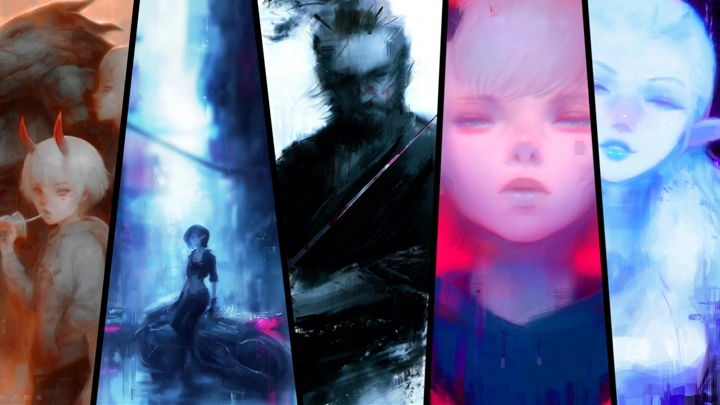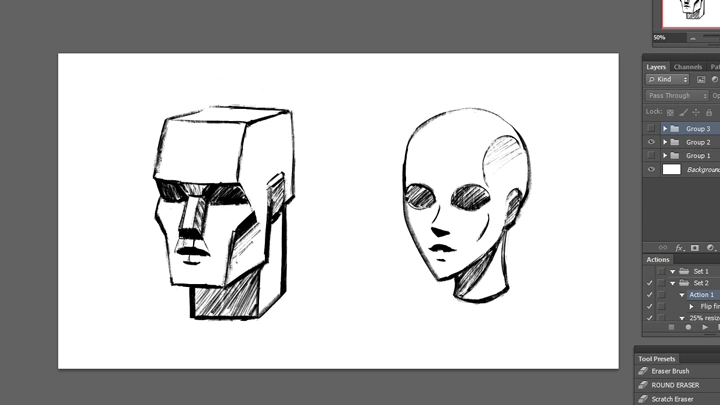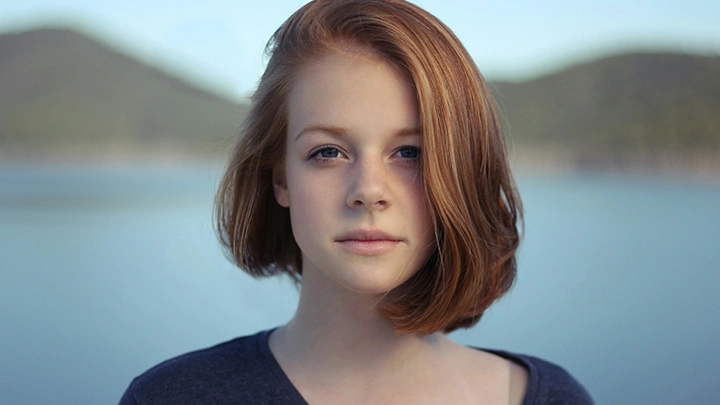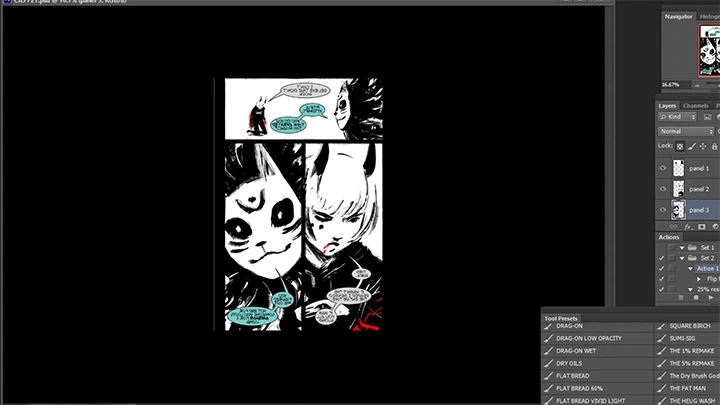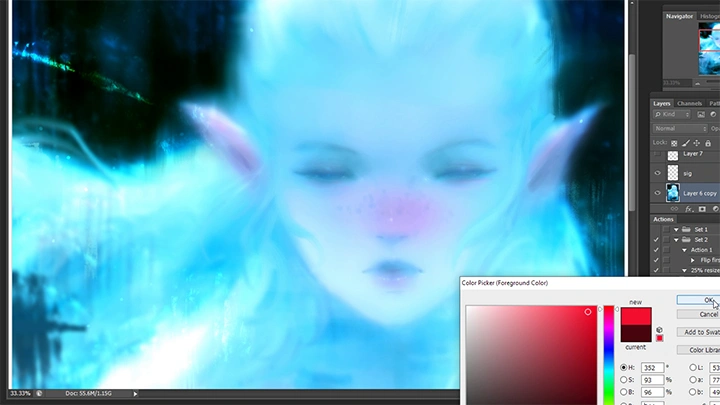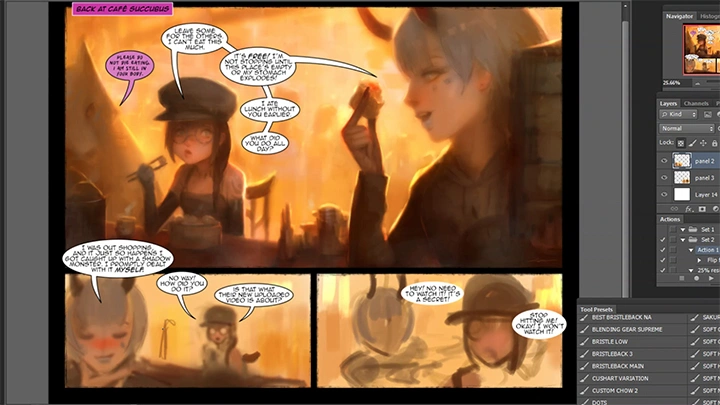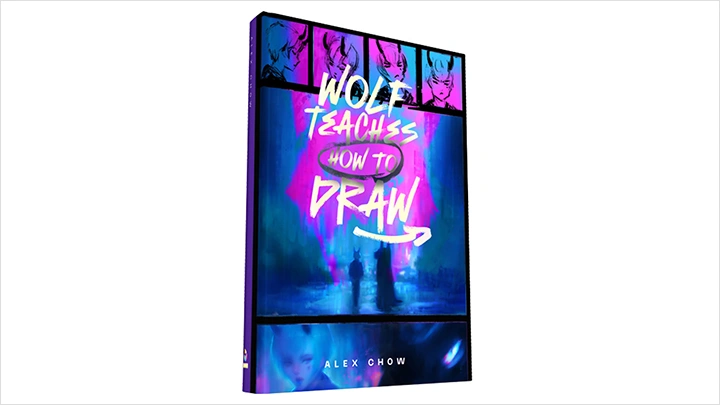[Course]conceptartist,alexchow Details
- Section 01
OT
01. Orientation- Kick off the course with a heartfelt welcome that maps out how every lesson stacks together to get you from first sketch to gallery‑ready portrait.
- Section 02
A Discussion on Style and My Approach to Art
02. Style Explanation- Pull back the curtain on the inspirations that shaped my trademark ethereal look, tracing its evolution from early influences to present day.
03. Danger of Being Too Technical- Show how working on a single, ever‑changing master layer frees both your hand and your imagination from stiff, step‑locked thinking.
- Section 03
Technical Breakdown of the Portrait
04. Head/Bust Structure- Break the head and upper torso into clear, repeatable volumes so every later brushstroke rests on unshakable anatomical ground.
05. Angles and Axes- Use tilts, twists, and foreshortened axes to push forms convincingly toward—and sometimes right past—the viewer.
06. Shape Language- What are you saying with certain shapes? - Decode the silent language of curves and angles so a silhouette can whisper a character’s personality before color ever enters.
07. Gesture in Portraiture- Gesture + Common Misconceptions with Gesture in Portraits (Dynamicism does not mean good) - Demonstrate how a tweak to hair mass or collar shape instantly deepens narrative and boosts readability.
- Section 04
Subjective Breakdown of the Portrait
08. The Alluring Portrait Part 1- Thinking in emotion and adjectives, not nouns + Facing Direction and Expression - Redefine gesture in portraiture, proving that a subtle tension or micro‑shift often conveys more emotion than exaggerated drama.
09. The Alluring Portrait Part 2- Creating "Aura", philosophy of lighting + avoiding common problems that kill the mood - Think in verbs and feelings—“wistful,” “defiant,” “fluttering”—and translate them into tilt, gaze, and line weight.
10. Composing Portraiture- Maximizing canvas space and differences from other types of compositions (positive and negative space), portrait vs landscape orientation
- Section 05
Preparation
11. Ideas- What do you look out for in creating an original character?
12. Gathering References- What to look out for when finding reference photos for portraits
13. Drawing Thumbnails- Drawing thumbnails for portraiture (one of them will be used for future steps)
- Section 06
Drawing Techniques
14. Workspace- Basic breakdown on workspace and hotkeys - Walk through my custom Photoshop workspace and shortcuts that keep creative flow smooth and interruption‑free.
15. Lineart- My unconventional way of drawing (philosophy, movement, brushes for drawing) - Teach kinetic drawing drills that channel energy from the shoulder through the stylus for lively, confident linework.
16. Drawing Demonstration- Build the course’s showcase drawing in real time, clarifying every choice from block‑in to clean, value‑ready line art.
- Section 07
Painting and Rendering Techniques
17. Chiaroscuro- Comprehensive technical explanation of chiaroscuro lighting/value scenario (the glow)
18. Brushwork- Demonstrating how to digitally paint, tie-ins, with traditional media and brushes to look out for - Dive deep into chiaroscuro, layering values for that signature inner glow borrowed from Baroque masters.
19. Breakdown of Colors- How do I approach colors to create the ethereal effect in my work? - Breaking down layer styles in Photoshapes
20. Skin Tones- Discussing how to tackle skin tones in my style - Demonstrate digital painting passes that blend traditional brush textures with software‑only sleights of hand.
21. Abusing Hue Sliders- The forbidden art of using hue sliders in digital painting to create effects hard to replicate in traditional paint - Unpack my color rituals—gradient harmonies, saturation focal points, atmospheric depth—that bathe subjects in dreamlike light.
- Section 08
Final Illustration Process
22. Process 1 (Beginning)- Dissect the PSD stack so Inner Glow, Gradient Maps, and blend‑mode alchemy layer translucence like sheets of stained glass.
23. Process 2 (Detailing)- Walk step‑by‑step through painting living skin: subsurface warmth, cool edge turns, and gentle hue dances.
24. Process 3 (Polishing and Rendering)- Reveal tasteful hue‑slider tricks that add atmospheric magic without flattening painterly nuance. - Finish with edge finesse, detail punches, and export prep that make the final illustration sing on print, web, and social feeds alike.
- Section 09
Ending Thoughts
25. Standing Out- Finding your niche, especially in a market with AI art, my take on fan art (and why it's far more helpful than it seems) - Things to consider when having a style like mine - Share the realities and rewards of sustaining a distinctive style while evolving and meeting client expectations.
26. Professional Advice- Marketing, social media, audience, lessons learned from my own journey, final words

